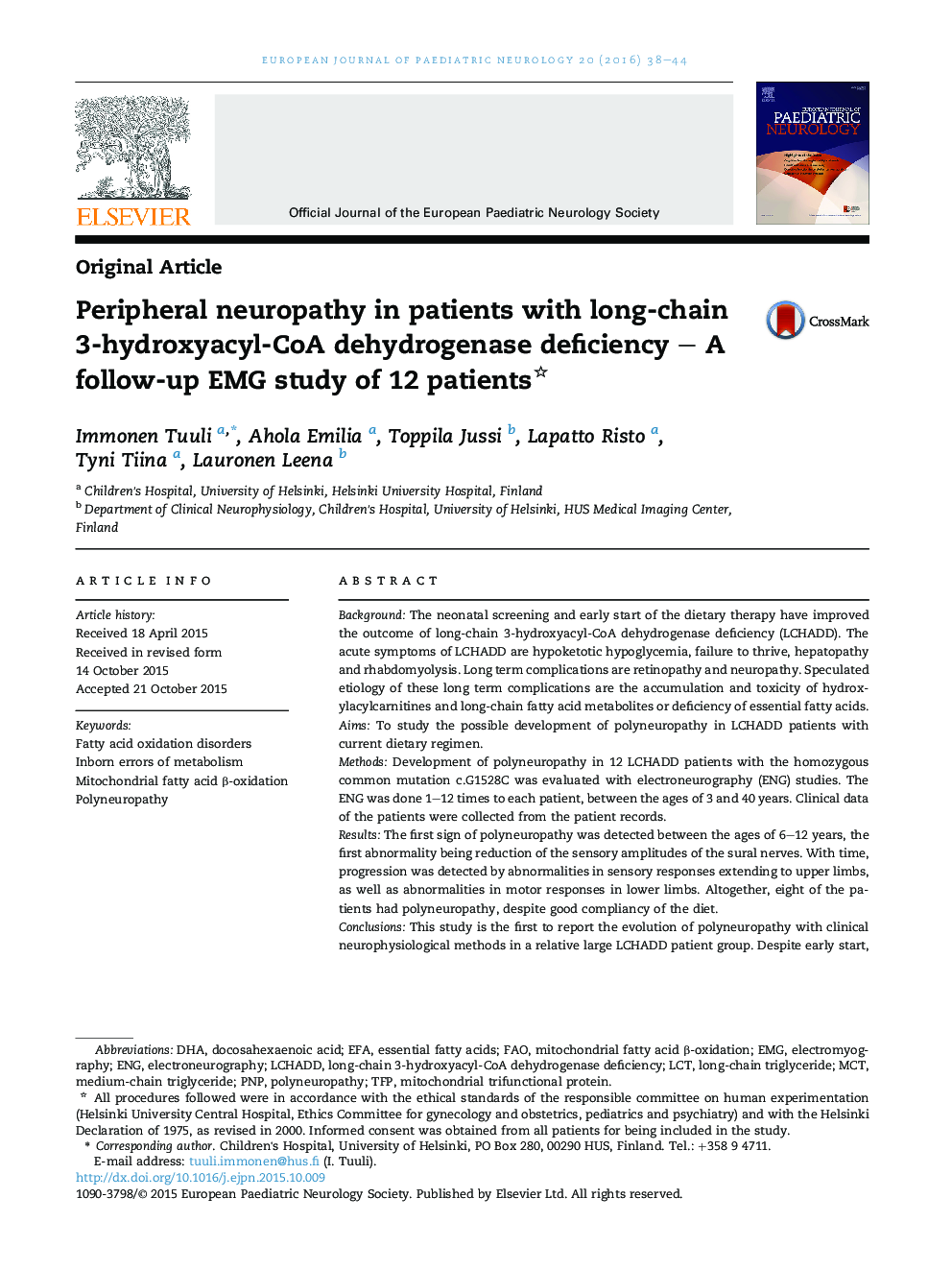| کد مقاله | کد نشریه | سال انتشار | مقاله انگلیسی | نسخه تمام متن |
|---|---|---|---|---|
| 3053655 | 1580009 | 2016 | 7 صفحه PDF | دانلود رایگان |
• The first sign of polyneuropathy was detected between the ages of 6–12 years.
• The first abnormality was the reduction of the sensory amplitudes of the sural nerves in lower limbs.
• Eight of 12 patients had polyneuropathy.
• Despite early start, and good compliance of the therapy, six of ten younger patients developed mild neuropathy.
BackgroundThe neonatal screening and early start of the dietary therapy have improved the outcome of long-chain 3-hydroxyacyl-CoA dehydrogenase deficiency (LCHADD). The acute symptoms of LCHADD are hypoketotic hypoglycemia, failure to thrive, hepatopathy and rhabdomyolysis. Long term complications are retinopathy and neuropathy. Speculated etiology of these long term complications are the accumulation and toxicity of hydroxylacylcarnitines and long-chain fatty acid metabolites or deficiency of essential fatty acids.AimsTo study the possible development of polyneuropathy in LCHADD patients with current dietary regimen.MethodsDevelopment of polyneuropathy in 12 LCHADD patients with the homozygous common mutation c.G1528C was evaluated with electroneurography (ENG) studies. The ENG was done 1–12 times to each patient, between the ages of 3 and 40 years. Clinical data of the patients were collected from the patient records.ResultsThe first sign of polyneuropathy was detected between the ages of 6–12 years, the first abnormality being reduction of the sensory amplitudes of the sural nerves. With time, progression was detected by abnormalities in sensory responses extending to upper limbs, as well as abnormalities in motor responses in lower limbs. Altogether, eight of the patients had polyneuropathy, despite good compliancy of the diet.ConclusionsThis study is the first to report the evolution of polyneuropathy with clinical neurophysiological methods in a relative large LCHADD patient group. Despite early start, and good compliance of the therapy, 6/10 of the younger patients developed neuropathy. However, in most patients the polyneuropathy was less severe than previously described.
Journal: European Journal of Paediatric Neurology - Volume 20, Issue 1, January 2016, Pages 38–44
